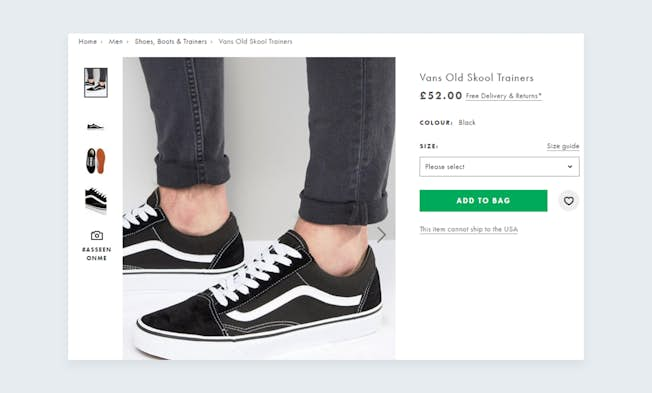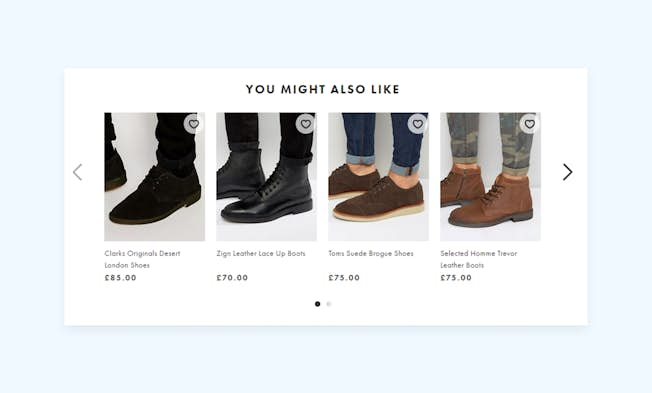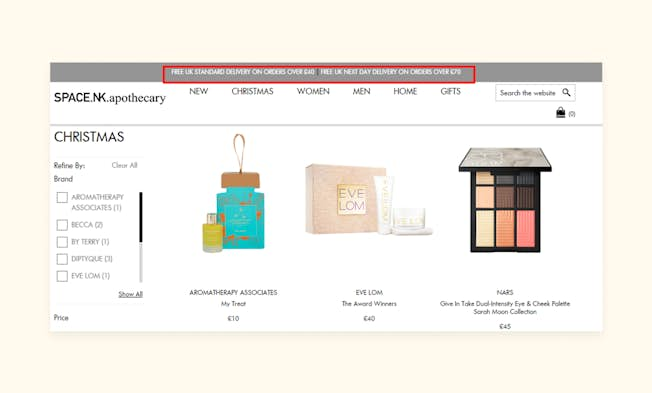Online shopping is generating an overwhelmingly large revenue stream across the globe, and continues to thrive with the increased use of mobile devices. The internet accounts for 7.4% of total retail spending, approximately $1.67 trillion. It’s expected to grow to 12.4% by 2019.
“The internet accounts for 7.4% of total retail spending – approximately $1.67 trillion.”
In order to maintain a competitive edge, many businesses are beginning to harness the power of online shopping, to sell their products and build their brand.
An excellent e-commerce campaign starts with a strong foundation. Before you begin promoting your products on social media and encouraging newsletter signups, you need to make sure you have a strong grasp of your campaign essentials.
Below, we’ve outlined a number of areas you should focus on at first, to maximize your e-commerce conversion rates.
1. Pick an Impeccable eCommerce Platform
Choosing the right e-commerce platform that fulfils your brand’s needs and preferences is fundamental to your e-commerce success. It’s the foundation upon which you’ll build your business, and any subsequent e-commerce campaigns.
If your business is in its infancy, or you have a limited budget, a pre-built e-commerce platform may be the most feasible, and affordable option, though if you can afford to contract a website developer this will afford you a more bespoke setup. Whatever you decide, there are several factors that you should take into account to inform your decision:
How much are you willing to pay for a platform? It’s important to research platform pricing thoroughly. While one package may start at $29, it may not cover the features that you need, such as the ability to generate discount codes or sell a large number of products. Take your time to make detailed comparisons of each pricing level and the features it unlocks, to make sure you find the right deal.
Do you need to track inventory? The higher your volume of orders, the more difficult it can be to ensure your inventory numbers are accurate. For many businesses, having a platform that shows inventory of what’s being sold not only from their e-commerce site, but from other marketplaces such as eBay or Amazon is of primary importance. If this applies to you too, make sure your chosen platform has these inventory integrations.
How many variations do you have per product? (different sizes, colors or materials, for example?) Again, certain e-commerce platforms accommodate product variations, making it easy for each variation to be catalogued, attributed an SKU (Stock Keeping Unit) and priced appropriately.
What payment options do you want to use? This will impact your selection. Different platforms integrate with different payment gateways, so whether you want to use PayPal or deal in bitcoin, make sure your platform incorporates multichannel inventory management.
What shipping options do you want to make available? Is your shipping integrated with major carriers? Flexible shipping rates? Is shipping management automated or manual? Some e-commerce platforms will charge you more if you want to offer your customers the option to use FedEx as their shipping method, for example.
2. Optimize Product Pages
Conversion rate optimization is the single most important practice you need to implement on your product pages. This is where you’ll be aiming to convert engaged browsers into loyal customers, generate more revenue and ultimately increase your profit margin.
“The purpose of product pages is to convey the unique features and benefits of your offerings – to showcase their unique selling points.”
Many e-tailers are aware of the value of including perfectly detailed product descriptions and attractive imagery. In fact, Freckle more than doubled its conversion rates by rewriting the copy on its product pages. However, with a few minor additions you can significantly enhance the performance of your e-commerce campaign and drive even more conversions. We’ve listed some quick and easy changes you can implement to ensure that your product pages perform to the best of their ability:
Include product videos: product videos perfectly capture the product’s feel, function and aesthetic in a much more dynamic and immersive way than static images. They provide clarification and answer a lot of the uncertainties that potential customers may have. According to survey data, over 57% of retailers surveyed reported Average Order Value (AOV) increases of at least 50% for customers that watch video on a product page.
Use tabbed navigation: text-heavy product pages are a sure-fire way to negatively affect your conversion rate, yet at the same time, you need to be able to provide potential customers with as much information as possible. By using tabbed navigation boxes you can achieve the perfect balance. Users can click a series of dropdowns to find out more product details, as well as information about payment options and delivery methods. Simultaneously, your product pages will remain concise and easy to navigate!
Add an FAQ section: adding an FAQ section to your product pages can act as an effective pre-emptive strike. It will help you to anticipate any queries or concerns a potential customer has, that may impede their decision to purchase. Consider the most popular questions your customers currently ask, and add to the list based on what questions could arise after reading the product description.
Include your product reviews: According to iPerceptions, customers are 63% more likely to buy from a site that displays customer reviews. Peer-to-peer recommendations are a powerful force, and can relieve and reassure potential customers in a way that branded content and other marketing tactics can’t. Reviews will endow your product with a sense of authenticity, and demonstrate that its users are invested enough to leave some feedback about it.
Try to upsell or cross sell: You can add a number of recommended products to a product page at either a similar or higher price point in a subtle attempt to convince your customer to upgrade. Just remember to make sure your recommendations fulfil the customer’s original needs and preferences.

ASOS are an excellent example of an e-tailer who know how to optimize product pages. Product information is included in a dropdown tab, they attempt to cross-sell with additional recommended products AND they even try to upsell as well.

3. Use an Abundance of Payment and Shipping Options
While most customers make their online purchases using a credit or debit card, some will prefer to use an alternative option. In fact, 40% of shoppers say that they would feel more comfortable purchasing from an online store that offers multiple payment methods.
“40% of shoppers would feel more comfortable purchasing from an online store that offers multiple payment methods.”
It’s essential that you offer a variety of payment options, so you can establish yourself as a credible and trustworthy vendor. If your e-commerce site only provides one way to pay, you will, by extension, seem like a less safe and secure choice.
In addition, the more payment options you offer, the further you can extend your brand’s reach. There are particular payment methods that are only available to certain countries, in certain currencies. For example, Stripe supports 25 countries and 139 currencies, whereas PayPal supports 203 countries and 26 currencies. Conduct some research to determine the preferred payment options for your target audience and you’ll be able to avoid isolating particular segments due to a limited number of payment gateways.
Providing a number of different shipping options to your potential customers is equally important, especially as studies have demonstrated that shipping fees are the number one factor that drives shopping cart abandonment (three dreaded words that can deflate even the most ambitious e-commerce campaign!).
“Shipping fees are the number one factor that drives shopping cart abandonment.”
Offer free shipping: a free shipping threshold for domestic orders is a great way to incentivize customers to convert, and helps to increase your Average Order Value. You can decide what your minimum threshold should be based on your AOV and how much your products cost to ship.

Offer real time shipping quotes: this means that your customers will only pay the amount it would cost you to ship their order, and that it will vary based on the products they select. A shipping calculator will work out charges for individual customers at the checkout page, which can instil confidence in them as they can see that you aren’t profiting from inflated shipping charges.
Offer flat shipping fees: this is another way to reassure your customers that you aren’t overcharging them for shipping. You can provide flat rates for a number of weight ranges and order totals, and the static nature of these costs will illustrate your reasonable approach and open attitude.
Considering any or all of these shipping methods will help to sustain your conversion rate and give your ecommerce campaign a necessary boost.
4. Simplify Your Checkout Process
It’s simple – the less complicated your checkout process, the less likely your customers are to abandon it. The average shopping cart abandonment rate of ecommerce websites is 65.23%, which means that many e-tailers are missing out a large portion of revenue when they don’t have to.
“The average shopping cart abandonment rate of ecommerce websites is 65.23%”
Common complaints include the fact there is no option to check out as a guest, too much information is required, and the checkout process is too complex. So to ensure the success of your ecommerce campaign, in this instance, less is more.
- The most obvious action you can take to avoid shopping cart abandonment is to avoid requiring customers to register before making their purchase. 26% of users will abandon the transaction if they’re forced to do so.
- Have you ever refreshed a webpage only to lose the contents of your online shopping cart? It’s infuriating, and the common cause of many abandonments. A simple solution is to use a persistent shopping cart, which will let customers leave and come back to your website without having to re-add their chosen items.
- Ask for as little information from a customer as possible to complete their purchase. Lengthy and detailed contact forms are an instant deterrent to most, and while it would be ideal to collect as much customer information as possible for your future marketing efforts, it’s even more important to optimize the checkout process to encourage a repeat purchase
- You can also use the checkout process as a platform for cross selling to enhance conversions. You can display products related to whatever is already in your customer’s shopping cart to inspire a last minute additional purchase.
- Categories:
- Articles
- E-Commerce
Upgrade to Power Membership to continue
your access to thousands of articles, toolkits, podcasts, lessons and much much more.
Become a Power Member- Login
- View Courses
- - - -
- Courses
- Resources
- - - -
- My Account
- Change Password
- Logout




